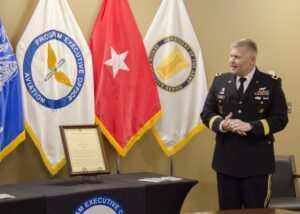
NASHVILLE, Tenn. --As the Army emphasizes modular open system architecture (MOSA) as a key priority for its Future Vertical Lift (FVL) platforms and upgrades to its current fleet, a lead aviation official said this week the service is having success making the business case to industry to address “MOSA hesitancy.” “[MOSA] is easy to say and it’s immensely complex to execute,” Brig. Gen. Robert Barrie, program executive officer for aviation, told attendees at the Army Aviation Association of America (AAAA)…

 By
By 











